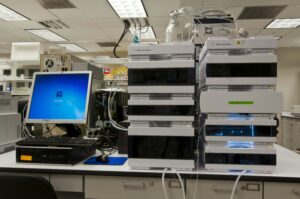
Canadian researchers have unveiled findings suggesting that prenatal exposure to certain air pollutants may increase the risk of autism spectrum disorder (ASD) in children. The study, conducted over two decades and involving more than 2.1 million births in Ontario, highlights a potential link between fine particulate matter, specifically sulphate and ammonium particles, and autism diagnoses. However, experts caution that the results indicate correlation rather than causation.
The research, published in JAMA Network Open, identifies the second and third trimesters of pregnancy as critical periods of vulnerability. This revelation adds to the growing body of evidence that air pollution, particularly its chemical composition, could impact neurodevelopmental outcomes. Despite the study’s significant findings, it has been met with mixed reactions from the scientific community worldwide.
Understanding the Study’s Findings
Fine particulate matter (PM 2.5), a well-known air pollutant, has been linked to various adverse health outcomes. In this study, researchers focused on the chemical components of PM 2.5, namely sulphate and ammonium, which are commonly derived from industrial activities, agriculture, sewage, and vehicle emissions. The study found a statistically significant increase in ASD diagnoses among children exposed to higher concentrations of these pollutants during prenatal development.
Importantly, the study accounted for total PM 2.5 levels and postnatal exposure, reinforcing the association between prenatal exposure to specific pollutants and autism risk. The researchers noted that children exposed to higher levels of sulphate and ammonium in the second and third trimesters were more likely to be diagnosed with ASD, suggesting these periods are particularly sensitive to environmental factors.
Expert Opinions and Reactions
The findings have sparked a range of responses from experts. Dr. Rachel Moseley, a principal academic in Psychology at Bournemouth University, emphasized the importance of distinguishing correlation from causation. She warned that misinterpretation of the study could lead to unnecessary public concern, especially given past controversies over alleged links between autism and other factors such as vaccines.
“This paper shows a correlation between prenatal exposure to sulphate and ammonium components and childhood autism diagnoses,” Dr. Moseley stated. “There is absolutely no evidence within the paper to suggest that the former caused the latter.”
Meanwhile, Professor Anne-Louise Ponsonby from the Florey Institute for Neuroscience and Mental Health in Melbourne highlighted the multifactorial nature of autism, where both genetic and environmental factors play a role. She advocated for further research into the combined effects of multiple pollutants and the potential impact of manufactured chemicals on neurodevelopment.
Implications for Public Health and Future Research
The study underscores the need for public health strategies aimed at reducing air pollution, particularly in urban and socioeconomically disadvantaged communities where the associations were most pronounced. The researchers acknowledged limitations in their study, such as potential exposure misclassification and the sensitivity of ASD case identification. However, they argued that the large sample size and detailed exposure estimates lend credibility to their findings.
Dr. Chloe Brimicombe, a climate scientist at the Royal Meteorological Society, pointed out that while the study shows a correlation between air pollution and neurodevelopmental outcomes, it does not confirm causation. She emphasized the importance of considering socioeconomic variables and conducting life course analyses to understand the complexities of neurodiversity.
“This study is not confirming air pollution exposure causes autism in children,” Dr. Brimicombe explained. “We do know that negative impacts on cognitive function are associated with air pollution exposure, but most of this research is for an older age category.”
Looking Ahead: Next Steps and Considerations
The study’s findings highlight the critical role of environmental exposures in early childhood development and the ongoing need for comprehensive research into the effects of air pollution. As researchers continue to explore the intricate relationships between pollutants and neurodevelopment, public health policies must adapt to protect vulnerable populations, particularly in urban areas with high pollution levels.
Future research may focus on the combined effects of various pollutants and the potential contributions of genetic factors to autism risk. As the scientific community seeks to unravel these complex interactions, the ultimate goal remains to improve health outcomes for children and reduce the burden of environmental pollutants on society.







